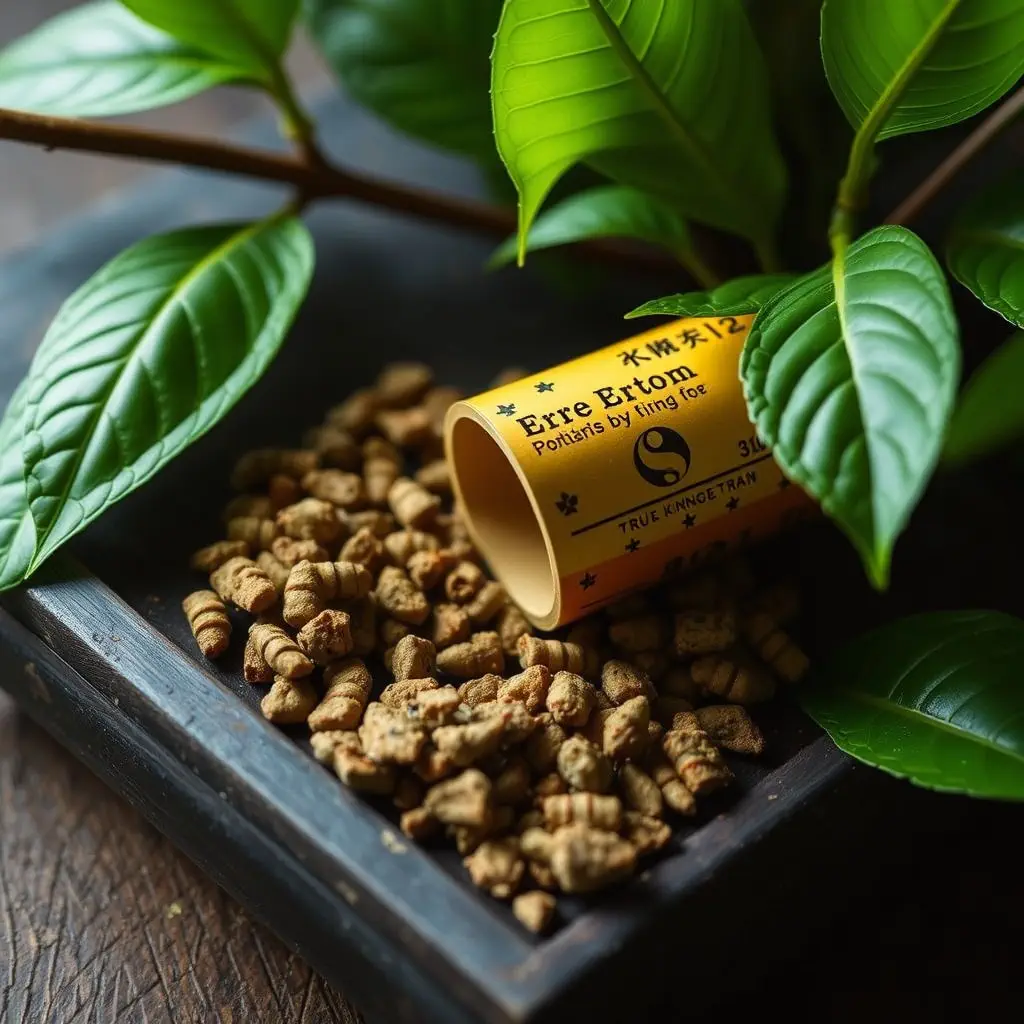Muscle soreness, known as DOMS, can result from intense physical activity and is associated with inflammation and tissue breakdown. Lotus Blue Flower Kratom, derived from the Mitragyna speciosa plant, has gained attention for its potential to alleviate muscle soreness due to its analgesic properties, primarily through its key alkaloids mitragynine and 7-hydroxymitragynine. These compounds are believed to interact with opioid receptors to provide pain relief. To maximize its benefits for muscle recovery, it's advisable to use it responsibly, in conjunction with proper hydration, nutrition, rest, and post-workout routines, along with stretching or light massage therapy. Safety precautions include starting with a low dose, avoiding combinations with other central nervous system depressants, and consulting with healthcare providers for personalized advice and to monitor for interactions, especially for individuals with existing health conditions or those taking other supplements/medications. Users should also be aware of the legal status of Kratom in their region. Regular monitoring of its effects and immediate medical attention for any adverse reactions are recommended for safe and effective use of Lotus Blue Flower Kratom in managing muscle soreness.
Muscle soreness can be a persistent challenge for individuals engaged in regular physical activity, from athletic training to everyday exercise. Exploring effective relief strategies is paramount for maintaining an active and healthy lifestyle. This article delves into the potential of kratom supplements, particularly Lotus Blue Flower Kratom, as a remedy for muscle soreness. We will dissect the science behind muscle soreness and how kratom may alleviate discomfort, present informed relief strategies, and discuss safety considerations to ensure responsible use of these supplements. Join us as we navigate the intersection of natural wellness and recovery.
- Understanding Muscle Soreness and the Role of Kratom Supplements
- Effective Relief Strategies with Lotus Blue Flower Kratom for Muscle Soreness
- Safety Considerations and Best Practices When Using Kratom for Muscle Recovery
Understanding Muscle Soreness and the Role of Kratom Supplements

Muscle soreness can manifest as a result of intense physical activity, heavy lifting, or even repetitive motion. This discomfort, often referred to as delayed onset muscle soreness (DOMS), typically occurs after exercise when muscles are subjected to unaccustomed or extreme levels of exertion. The body’s natural response to such stress involves inflammation and tissue breakdown, which can lead to the familiar sensation of pain and stiffness in the affected muscles. In this context, Kratom supplements have gained attention for their potential role in providing relief from muscle soreness. Extracted from the leaves of the Mitragyna speciosa tree, commonly known as the lotus blue flower, Kratom contains alkaloids that may interact with the body’s opioid receptors, offering analgesic effects. Users often report a reduction in pain levels when taking Kratom supplements, which can be particularly beneficial post-exercise. The primary active compounds found in Kratom, mitragynine and 7-hydroxymitragynine, are believed to contribute to its pain-relieving properties, making it a potential alternative for managing muscle soreness. It’s important to note that while Kratom may offer relief from muscle soreness, it should be used responsibly and in accordance with medical advice due to its potent effects and the varying legal statuses across different regions.
Effective Relief Strategies with Lotus Blue Flower Kratom for Muscle Soreness

Lotus Blue Flower Kratom, a variant of the Mitragyna speciosa plant, is often sought after for its potential muscle soreness relief properties. When incorporated into one’s wellness regimen, it can serve as a natural alternative to help alleviate discomfort associated with muscle strain or exercise-induced fatigue. The alkaloids present in Lotus Blue Flower Kratom, such as 7-hydroxymitragynine and mitragynine, are believed to interact with the body’s opioid receptors, providing analgesic effects that can ease muscle pain. To maximize its benefits for muscle soreness, it is advisable to consume Lotus Blue Flower Kratom after consulting with a healthcare provider, ensuring the appropriate dosage tailored to individual needs. Additionally, combining this supplement with other recovery strategies, such as adequate hydration, rest, and proper nutrition, can enhance its effectiveness. Users often report that incorporating Lotus Blue Flower Kratom into their post-workout routine contributes to a more expedient recovery process, allowing for improved muscle flexibility and reduced stiffness.
Furthermore, the integration of Lotus Blue Flower Kratom into a comprehensive relief strategy can be augmented by incorporating stretching or light massage therapy. These practices facilitate blood flow and aid in the removal of metabolic waste from the muscles, further supporting recovery. It is crucial to maintain a balanced approach when using any supplement, including Lotus Blue Flower Kratom, as part of your muscle soreness relief strategy. This entails considering individual health conditions, potential drug interactions, and adhering to recommended guidelines for safe usage. By doing so, users can leverage the natural properties of Lotus Blue Flower Kratom to help manage muscle discomfort effectively.
Safety Considerations and Best Practices When Using Kratom for Muscle Recovery

When integrating kratom, specifically products like Lotus Blue Flower kratom, into a muscle recovery regimen, it is imperative to approach its use with caution and knowledge. Kratom, derived from the leaves of the Mitragyna speciosa tree, has been traditionally used for pain relief and as a stimulant. For individuals experiencing muscle soreness following intense exercise or activity, kratom may offer relief due to its alkaloid content, which can interact with opioid receptors in the brain. However, safety considerations must be paramount. Users should start with a low dose to gauge individual sensitivity and avoid combining it with other substances that depress the central nervous system, such as prescription painkillers or alcohol, to prevent adverse effects.
Best practices when using kratom for muscle recovery include strict adherence to dosing guidelines based on body weight and personal tolerance levels. It is also crucial to maintain an open dialogue with healthcare providers about its use, given the potential for interactions with other medications and the need for medical supervision, especially if one has pre-existing health conditions or is taking other supplements or medications. Additionally, users should be aware of the legal status of kratom in their jurisdiction, as it varies by region. Regular monitoring of one’s physical response to kratom is essential, and any unusual symptoms should prompt immediate medical attention. By following these guidelines, individuals can safely explore whether Lotus Blue Flower kratom or other kratom strains can aid in their muscle recovery process.
In conclusion, muscle soreness can be a significant hindrance to one’s physical activities and overall well-being. A comprehensive understanding of the underlying mechanisms and the potential benefits of kratom supplements, particularly Lotus Blue Flower Kratom, has been shed light upon in this discussion. The effective relief strategies outlined provide practical avenues for those seeking natural alternatives to mitigate muscle soreness. However, it is imperative to approach the use of kratom with caution and adhere to safety considerations and best practices to ensure responsible consumption during muscle recovery processes. By doing so, individuals can leverage the potential benefits of Lotus Blue Flower Kratom while minimizing any associated risks, thereby supporting their active lifestyles without undue discomfort.






